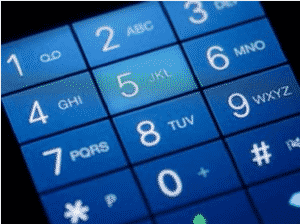Thanks to the fact that our phones can now easily store what feels like an unlimited number of phone numbers, it’s likely been a long time since many of us committed a number to memory. However, even though we no longer need to memorize phone numbers or even write them down, there are still benefits to holding onto the number you do have. Anyone who has switched phone providers without porting over their previous number knows the pain of not just having to notify their friends and family of the change, but updating all of their contact information accordingly.
With that in mind, it may seem strange that anyone would willingly let go of their old number when making the switch between service providers, but it’s not always clear when you can and can’t port numbers to a new service. As it turns out, Canadians are at an advantage, as number portability is possible in most cases, no matter what kind of service they’re making the switch to. There are exceptions of course, but the most important thing consumers can do is ask their new service provider about number portability before canceling service with their current provider.
What is Number Portability?
Local Number Portability (LNP) is both convenient and pro-consumer, and this is by design. Local Number Portability was actually introduced to the telecom industry in order to combat monopolistic business practices from major phone service providers. Before LNP was created, you had to obtain a new number when switching carriers. The major downside of this (outside of the inconvenience of having to get a new phone number, of course) is that it essentially allowed service providers to lock down clients who did not want to change their existing number. While Canadians have the major disadvantage of paying some of the highest telecom prices in the world, they have a lot more options when it comes to number portability than the rest of the world. In fact, Canada, South Africa, and the United States are the only countries that offer full number portability between both fixed lines and mobile phone lines.
How Does Number Portability Work?
Now that we know why number portability exists, it’s important to discuss how it works. When a subscriber requests to keep their old phone number when switching to a new carrier, it’s typically the responsibility of the old carrier to “map” the existing number to the undisclosed number assigned by the new carrier. By maintaining a database of numbers, the original carrier is able to reroute the number to the new carrier. In Canada, it can take anywhere from a week to 21 days for the transfer to be completed.
As outlined by the CRTC, you can keep your existing phone number whenever you transfer services from:
- Landline to landline
- Landline to mobile
- Mobile to landline
- Mobile to mobile
It’s also important to note that your new service provider can perform the transfer while your existing services are still active. Consider that often times VoIP Phone is referred to as Digital Phone. Where you see ‘landline’ in the above list same applies to VoIP, as VoIP in itself is the modern form of the landline.
Unfortunately, there are a number of instances in which it’s not always clear whether you’ll get to keep your number or not. One such example is if you move to a different province or outside your “local calling area”. These situations are treated on a case-by-case basis, so it’s always important to check with your new service provider to see if they can carry out the transfer.
Mobile Number Portability
As noted above, number portability doesn’t just apply to landline telephones. Mobile number portability and VoIP number portability are also available, and you can make pretty much any combination of a switch you want (landline to VoIP, mobile to mobile, mobile to VoIP, etc.). In the case of mobile number portability, you have a few options available. If you’re switching mobile providers and getting a new phone in the process, you’ll need to hang onto your current SIM card if you want to keep your existing number. If you’re looking to keep your old phone, you’ll have to make sure it’s unlocked first before taking it to a new carrier (though if you’re sticking with the same carrier, you won’t have to do this). Fortunately, as of December 2017, all cell phones in Canada must be sold unlocked or be unlocked at the time of purchase, so if you’ve purchased a new phone since then, it should already be unlocked. If you still have time remaining on a two-year mobile contract, you will likely need to pay an early cancellation fee. Even if you do decide to cancel early, make sure you don’t cancel your existing plan before signing up for a new one. If you do, you risk losing your phone number and probably won’t get it back. Your new carrier can transfer your phone number and cancel your old plan, free of charge.
VoIP Number Portability
If you are considering making the switch to a VoIP phone and keeping your existing number is a concern, just know that most VoIP providers in Canada do offer the ability to port your number. Some, such as Phone Power, will do it for free, while others may charge a one-time fee in the $20-30 range. It’s also important to check your existing service agreement to find out whether you will have to pay any penalties for switching providers before the end of a service term. If you’re with a traditional carrier such as Bell or Rogers and are looking to make the switch to VoIP, you may feel pressure to keep their services (they will likely extend you a counter-offer). While this is a great opportunity to barter for some cost savings and extra features, they still won’t measure up to the value offered by a standard VoIP plan, which typically features Voicemail, Voicemail to Email, nationwide long distance, Caller ID and of course, number porting.
The Benefits of Number Portability
Number portability offers advantages for all consumers, but is especially important for businesses, as switching primary numbers can add unneeded hassles such as having to spend time and money on such activities as updating your website, business cards, and other marketing materials. It also means that you won’t have to inform friends, relatives, or clients about any change in your contact information. Many businesses place great significance on their existing number and by being able to port it to new carriers and different forms of telecommunication, number portability effectively empowers consumers and businesses by allowing them to shop around for phone services that best suit their needs. In the grand scheme of telecommunications, number portability doesn’t quite measure up to more important considerations like price, quality of service, and features, but it is something every Canadian should take into account whenever they need to reconsider their existing telephone solutions.


